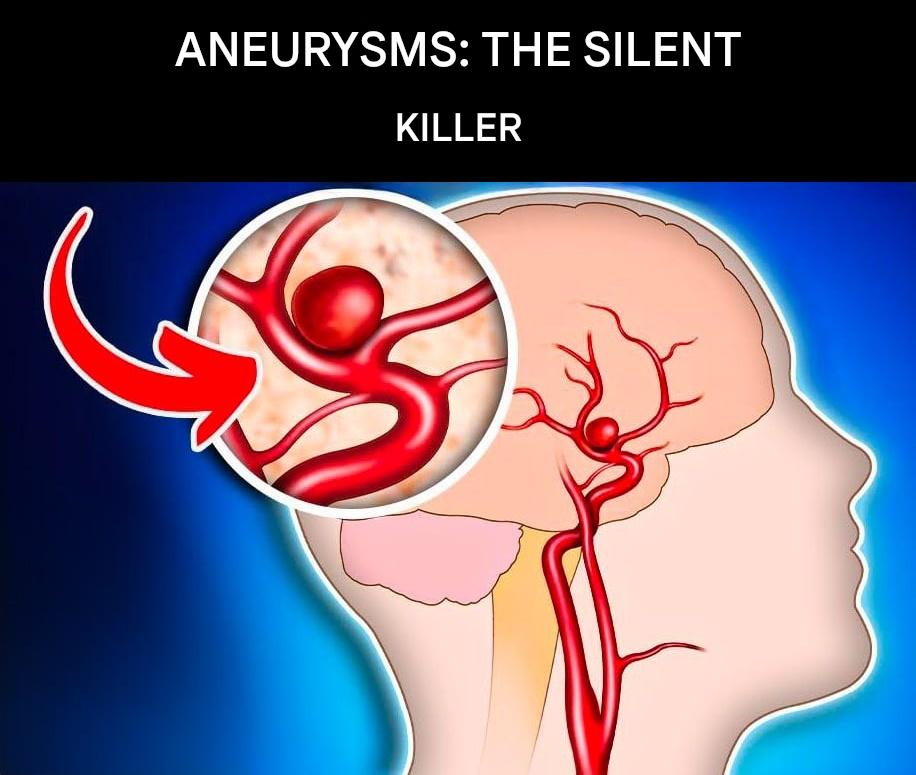Aneurysms, dangerous dilations of blood vessels, are often underestimated due to their silent nature. They generally present no warning signs until they rupture, an event that can cause internal bleeding with serious or even fatal consequences. This condition can affect critical areas such as the brain, heart, aorta, or kidneys. Identifying risk factors and adopting preventive practices can reduce risks and maintain cardiovascular health.
Understanding aneurysms and their risks
An aneurysm occurs when the wall of a blood vessel dilates abnormally due to structural weakness. This swelling can burst at any time, causing potentially fatal internal bleeding, especially if it occurs in vital organs such as the brain (which can cause a stroke), around the heart, in the aorta, or in the kidneys. What makes aneurysms particularly dangerous is their asymptomatic nature: in the absence of pain or warning signs, most people are unaware they have an aneurysm until it’s too late.
The Absence of Symptoms: The Trap of a Silent Killer
The first “symptom” of an aneurysm is often… its absence of symptoms. As long as an aneurysm isn’t pressing on an organ or nerve, it remains undetectable without a medical examination. It’s only when the aneurysm bursts that the consequences, such as hemorrhage or stroke, become apparent, requiring emergency medical intervention. This invisibility makes prevention and knowledge of risk factors all the more essential to anticipate this hidden danger.
The Thumb-Palm Test: A Simple Indicator
To assess a possible predisposition to aneurysms, there is a simple test called the “thumb-palm test.” It involves bringing the thumb to the opposite side of the palm; if the thumb can easily extend beyond the edge of the hand, this could indicate collagen laxity, often associated with a higher risk of aneurysms. This test is not diagnostic but rather an indicator: a flexible thumb may signal greater connective tissue flexibility, which could weaken artery walls.
Aneurysm Risk Factors
Several factors can contribute to the development of an aneurysm by weakening or inflaming the artery walls:
Smoking: Smokers have a four times higher risk of developing an aneurysm. Inhaled smoke introduces toxins into the bloodstream, where they irritate the blood vessel walls, weakening them over time.
Alcoholism: Excessive alcohol consumption exposes arteries to harmful chemicals that can weaken their walls. This particularly concerns chronic consumers, as the damage accumulates over the long term.
Diabetes and excess sugar: High blood sugar levels, even if they come from hidden sugars in starchy foods or food additives like maltodextrin, oxidize artery walls and promote their deterioration.
Seed oils: Rich in omega-6 fatty acids, these oils (like sunflower oil) promote chronic inflammation of blood vessels, increasing the risk of aneurysms.
Dental bacteria: A bacterial infection of the gums, if left untreated, can release pathogens into the bloodstream. These bacteria can accumulate in the vessels and cause inflammation, a leading cause of aneurysms.
High blood pressure: The combination of high blood pressure and inflammation weakens artery walls and increases the risk of aneurysms.
Copper deficiency: Copper plays a fundamental role in the production of collagen, which is essential for the strength of blood vessels. Copper deficiency, often linked to prolonged zinc intake without adequate copper replacement, can weaken vascular tissue and increase the risk of aneurysms.
Continued on the next page
ADVERTISEMENT
